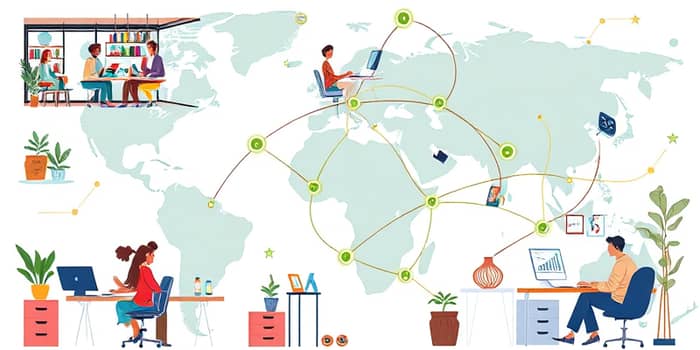
The global labor landscape is undergoing an unprecedented transformation as economic forces and technological advances reshape how, where, and when work gets done. From wage stagnation to the rise of remote work, these shifts demand fresh strategies from job seekers, employers, and policymakers.
Global economic growth stabilized at 3.2% in 2024–2025, yet momentum has slowed, impacting low-income countries the hardest. While inflation rates have moderated from their previous peaks, real wages remain under pressure in most regions, constraining consumer spending and household resilience.
Despite the overall unemployment figure, a hidden crisis simmers in youth unemployment and underemployment, particularly across low-income economies where NEET rates have spiked.
Labor force participation is edging downward globally, yet patterns vary sharply by region. In high-income nations, older workers and women are entering the workforce in record numbers, partly offsetting aging demographics. Conversely, low-income regions face declines in participation, especially among youth and female workers, exacerbating income inequality and social challenges.
Addressing these gaps requires investments in education, childcare, and inclusive policies that empower underrepresented groups to engage in meaningful employment.
The pandemic-era shift to remote work has solidified into a long-term trend. As of early 2025, 22–23% of US employees work remotely at least part-time, and 6% of new job postings are fully remote. This evolution reflects a broader preference: 83% of global workers favor hybrid arrangements, even though only 16% of firms have adopted fully remote models.
Organizations that embrace flexible models not only attract top talent but also foster a more resilient and engaged workforce.
Different industries have embraced remote and flexible work at varying rates. Professional services (24.3%), technology (18.3%), and manufacturing (11.4%) lead in remote hiring. Fast-growing categories include coaching (+73%), luxury goods (+71%), and consumer electronics (+42%).
At the same time, 95% of employers now recognize that a robust skills-based hiring approach is essential for agility. Companies using skills-first strategies are 57% more likely to navigate market disruptions successfully.
The World Economic Forum’s “Future of Jobs Report 2025” identifies five macrotrends: technological change, green transition, geoeconomic fragmentation, uncertainty, and demographic shifts. Generative AI and digital transformation are redefining skill demands, creating a widening skills gap for roles that require advanced technical and soft skills.
As sustainability becomes a driver of job creation, sustainability-driven green technology skills have emerged as crucial for the clean energy sector and beyond. Continuous learning and reskilling initiatives are now vital to stay competitive.
Persistent regional disparities mean that high-income areas capture most of the benefits from AI, flexible work, and quality job creation. Low-income regions, however, face deeper challenges in job access and workplace flexibility.
Governments and organizations must collaborate on policies that include:
Addressing these issues will require fiscal strategies that balance inflation control with investments in human capital, as well as thoughtful immigration policies that align labor supply with market needs.
In this dynamic environment, job seekers should embrace lifelong learning, prioritize in-demand skills, and leverage networking to access hidden opportunities. Employers must foster a culture of agility, invest in digital tools, and champion flexible work models.
Policymakers can support these efforts by investing in infrastructure, facilitating public-private partnerships for reskilling, and ensuring social protections evolve with new employment forms such as gig and project-based work.
Ultimately, by aligning the interests of workers, businesses, and governments, we can build a labor market that is resilient, equitable, and forward-looking. The path ahead is challenging, but with collaboration and innovation, the evolving job market can remain a source of opportunity and prosperity for all.
References













